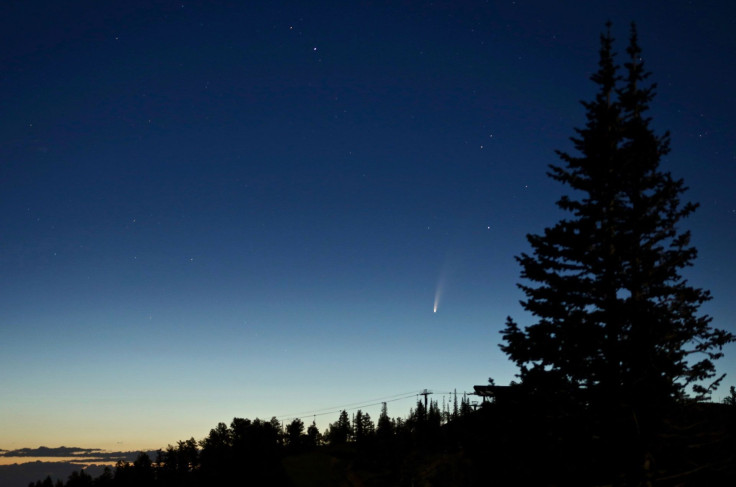Rare Green Comet Viewing: How To Watch The Celestial Object Pass Earth
The rare green comet that has been traveling through space for the past month is expected to make its closest approach to Earth on Wednesday and Thursday when it will be 26 million miles away from the planet.
The green comet, which is also called C/2022 E3 (ZTF), was first visible in the northern hemisphere at the beginning of January and then in the rest of the world weeks later.
"The comet is now visible all night long from northern latitudes but will surely fade from easy observation during the next few weeks," NASA wrote Tuesday on its website.
Those who are hoping to see the rare green comet may be able to see it with the naked eye at night but would probably have a better chance using a telescope.
"The comet is in the north of our skies, currently close to Polaris, the pole star directly due north," said Jake Foster, a Royal Observatory astronomer.
"The comet is best viewed after midnight when it reaches its highest point in the sky. It will move a significant distance across the sky from night to night as it makes its way towards the constellation of Taurus over the coming weeks."
Comet enthusiasts can also pinpoint the comet's location using a free stargazing app that would make viewing easier.
"With a pair of binoculars or a small telescope, you should be able to spot the comet as a faint green blob," Foster explained. "If you are lucky and your skies are particularly dark, you may even be able to see one of its vast tails, too."
C/2022 E3 (ZTF) was discovered in March 2022 by astronomers at the Zwicky Transient Facility in California.
Due to its green glow, experts suspect the comet is from the Oort cloud, a collection of icy bodies believed to exist in the farthest part of the solar system. The last time the green comet passed by Earth was 50,000 years ago.

© Copyright IBTimes 2025. All rights reserved.






















